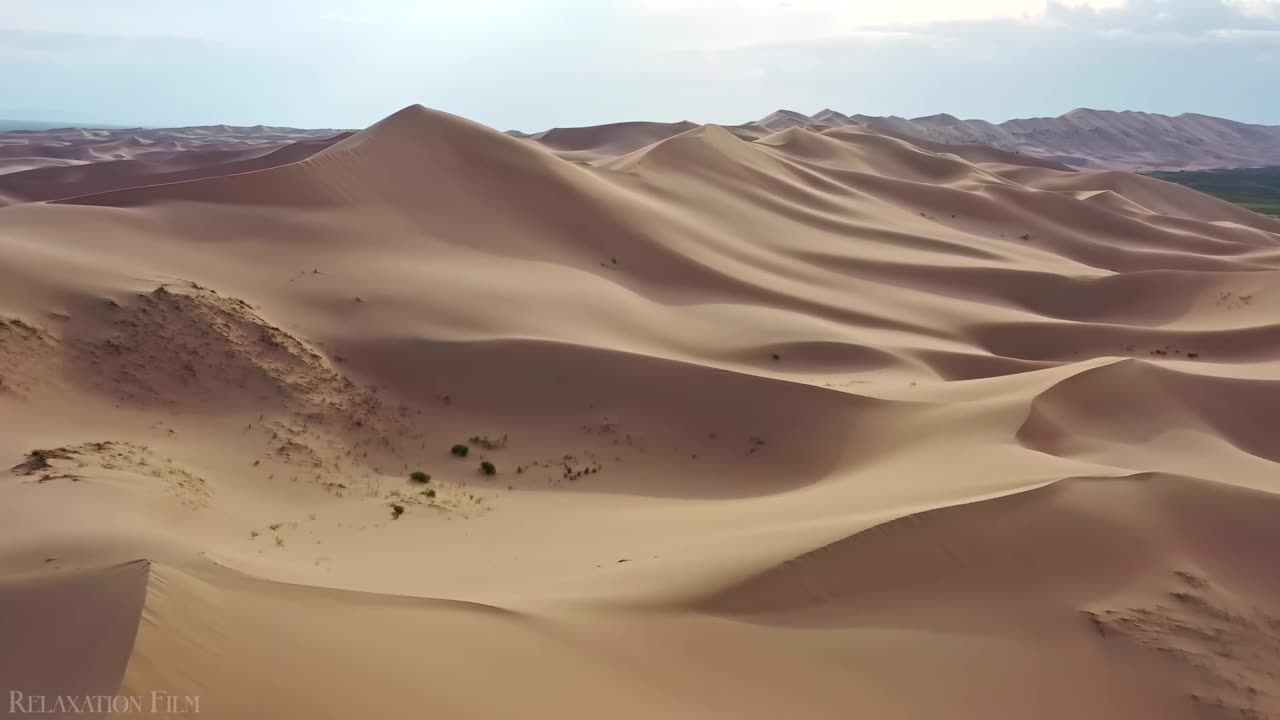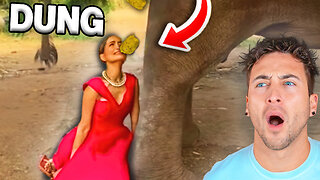Premium Only Content

EARTH 4K - Relaxation Film - Peaceful Relaxing Music - Nature 4k Video UltraHD - OUR PLANET
Earth, often referred to as the "Blue Planet," is the third celestial body from the Sun in our solar system and the only one known to support life. This remarkable planet is a complex and dynamic world characterized by a rich tapestry of geological, atmospheric, and ecological features. Here is a detailed description of Earth:
Physical Characteristics: Earth is predominantly composed of rock and metal, with a diverse landscape that includes vast oceans, towering mountains, expansive deserts, lush forests, and sprawling plains. Its diameter measures approximately 12,742 kilometers (7,918 miles), making it the fifth-largest planet in our solar system.
Atmosphere: Earth's atmosphere is a unique blend of gases, primarily composed of nitrogen (78%), oxygen (21%), and trace amounts of other gases such as carbon dioxide and argon. This life-sustaining atmosphere is essential for supporting all forms of life on the planet.
Climate Zones: Earth boasts a variety of climate zones, ranging from polar ice caps to tropical rainforests. These zones are determined by factors such as latitude, altitude, and proximity to large bodies of water, creating diverse weather patterns and ecosystems.
Water: Earth is renowned for its abundance of water. Approximately 71% of the planet's surface is covered by oceans, while the remaining 29% consists of landmasses. Water is essential for life and plays a vital role in regulating the planet's climate.
Biosphere: Earth's biosphere is a marvel of diversity and complexity. It hosts an astonishing array of life forms, from microscopic bacteria to majestic elephants. The biosphere encompasses ecosystems that range from the depths of the ocean to the highest mountain peaks.
Continents: Earth's landmasses are divided into seven major continents: Africa, Antarctica, Asia, Europe, North America, Australia (Oceania), and South America. These continents each have their own unique geological history and ecosystems.
Geological Activity: Earth is geologically active, with tectonic plate movements that create earthquakes, mountain ranges, and volcanic activity. It has a solid inner core, a liquid outer core, a mantle, and a thin, rigid crust that is divided into several plates.
Moon: Earth has a natural satellite, the Moon, which orbits around it. The Moon has played a significant role in shaping Earth's tides and has been a source of fascination and inspiration for humanity throughout history.
Human Civilization: Earth is the birthplace of humanity and has been home to countless civilizations, cultures, and societies. It has witnessed remarkable achievements in science, technology, art, and culture, and continues to be a dynamic and ever-changing stage for human endeavors.
Environmental Challenges: In recent times, Earth has faced environmental challenges such as climate change, deforestation, pollution, and habitat loss. Efforts to address these issues have become critical to ensuring the planet's long-term sustainability.
Earth is a precious and fragile oasis in the vastness of the cosmos, a planet that has provided the conditions necessary for the emergence and flourishing of life. It is a testament to the wonders of the natural world and a reminder of our responsibility to protect and preserve this remarkable home for current and future generations.
-
 1:12:06
1:12:06
The Rubin Report
3 hours agoHost Can’t Believe What Hunter Biden Admitted During Insane Interview That’s Going Viral Now
108K43 -
 2:09:20
2:09:20
Benny Johnson
4 hours ago🚨Ghislaine Maxwell Breaks SILENCE: Will Expose EVERYTHING on Epstein Clients | We Have Inside Scoop
77.6K97 -
 1:28:19
1:28:19
Nikko Ortiz
2 hours agoLive - Unwatchable Clips
17.3K1 -
 1:04:28
1:04:28
The Dr. Ardis Show
3 hours ago $1.34 earnedThe Dr. Ardis Show | Weather Modification and Chemtrails with Dane Wigington | Episode 07.22.2025
4.07K10 -
 LIVE
LIVE
TheAlecLaceShow
2 hours agoGuests: Senator Tuberville, Mike Howell, Jim Pfaff | Russiagate | Epstein | The Alec Lace Show
122 watching -
 1:36:22
1:36:22
The Mel K Show
3 hours agoMORNINGS WITH MEL K - A Sovereign Nation if We Can Keep it: Ending the International Organization Immunity Act of 1947 7-22-25
23.8K5 -
 LIVE
LIVE
Side Scrollers Podcast
3 hours agoIronmouse/Vshojo SCANDAL, Stripe DE-BANKING “Wrong Think”, RIP Theo | Side Scrollers
295 watching -
 LIVE
LIVE
LFA TV
16 hours agoLFA TV ALL DAY STREAM - TUESDAY 7/22/25
2,306 watching -
 30:40
30:40
Grant Stinchfield
2 hours ago $0.46 earnedNewsom Tried to Spin COVID Destruction into Success Story
9.15K -

The Shannon Joy Show
4 hours ago🔥🔥Karen Kingston Exposes the Transhumanist Agenda Behind the Trump Administration and Elon Musk’s AI Push🔥🔥
16.6K8